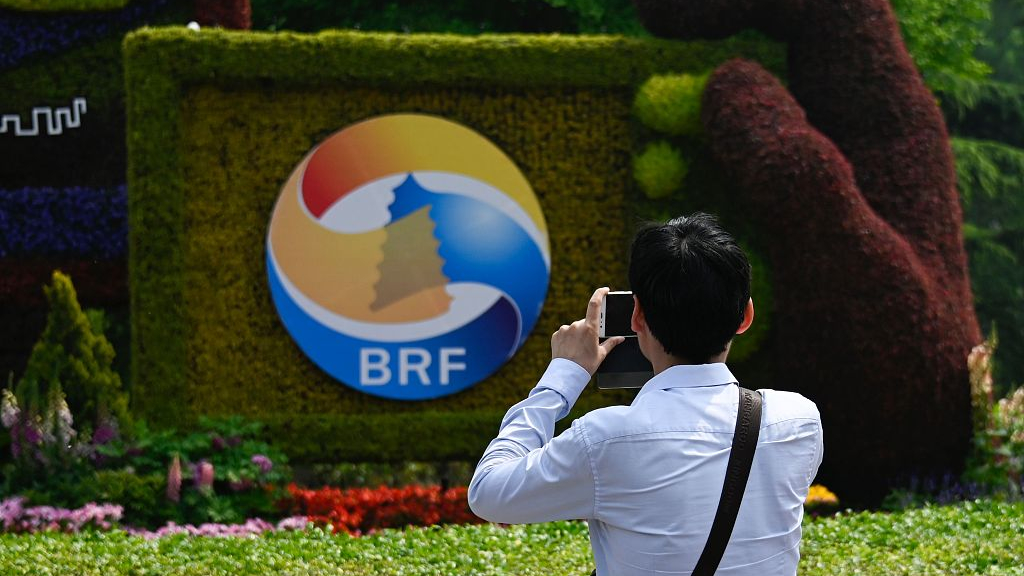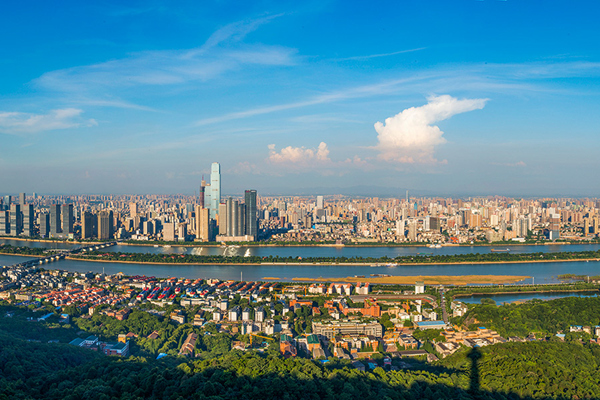Editor’s note: The Belt and Road Initiative (BRI), proposed by China in 2013, focuses on policy coordination, connectivity of infrastructure, unimpeded trade, financial integration and closer people-to-people exchanges in Eurasia, Africa, the America, and Oceania to seek common development and prosperity.
2019 witnessed progress of the initiative and closer cooperation among the BRI participating countries. By the end of October this year, China has signed cooperative documents with 137 countries and 30 international organizations. Let’s take a look at major events over the past year.
Italy becomes first G7 nation to join the BRI

On March 23, Italy became the first of the Group of Seven industrialized nations to sign a memorandum of understanding to jointly advance the construction of the Belt and Road during President Xi Jinping’s state visit to the country.
The two countries realize the huge potential of the BRI in promoting connectivity, and stand ready to strengthen the alignment of the BRI and Trans-European Transport Networks and deepen the cooperation in ports, logistics, marine transportation and other areas, said a joint communique issued by the two countries.
According to the communique, the two sides have agreed to advance the China-Italy comprehensive strategic partnership in the spirit of mutual respect and mutual benefit for win-win outcomes.

On April 22, the Office of the Leading Group for Promoting the Belt and Road Initiative published an official report on BRI progress in eight languages titled The Belt and Road Initiative Progress, Contributions and Prospects.
The report is also one of the important achievements of the second Belt and Road Forum on International Cooperation held in Beijing on April 25-27.
On April 23, the first council meeting of the Belt and Road News Network (BRNN) was held in Beijing.
“We are glad to see that media has played positive and constructive roles in the process of building the Belt and Road partnership network after the initiative was proposed,” President Xi Jinping said in the congratulatory letter he sent to the meeting.
In total, 40 mainstream media organizations from 25 countries in Asia, Africa, Europe and Latin America participated in the meeting. So far, 182 media organizations from 86 countries around the world have joined the network. The Chinese newspaper People’s Daily serves as council chair.

On April 24, the Belt and Road Studies Network (BRSN) was inaugurated in Beijing.
The BRSN is an open mechanism of academic exchanges and cooperation, which is established to serve international think tanks, international and regional organizations and researchers of various countries, and promote the studies and academic exchanges on the BRI.
Relevant Chinese think tanks jointly launched the BRSN with Kazakhstan’s Nazarbayev University, Indonesia’s Center for Strategic and International Studies, Bulgaria’s National Association for the Belt and Road, the African Center for Economic Transformation, the East Asian Institute of the National University of Singapore, the New Silk Road Institute of the Republic of Korea, Russia’s Valdai Discussion Club and Harvard’s Ash Center of the United States.

The Second Belt and Road Forum for International Cooperation (BRF) was held in Beijing on April 25-27.
Themed “Belt and Road Cooperation: Shaping a Brighter Shared Future”, the forum was attended by about 5,000 participants from more than 150 countries and 90 international organizations.
Since the first BRF and during the second one, national governments, local authorities and enterprises reached a series of cooperation agreements, important measures and practical results.
As the host country, China has put together the most representative outcomes, and formed a list of deliverables of the second BRF.
The list includes 283 concrete results in six categories, namely, initiatives proposed or launched by the Chinese side, bilateral and multilateral documents signed during or immediately before the second BRF, multilateral cooperation mechanisms under the BRF framework, investment projects and project lists, financing projects, and projects by local authorities and enterprises.

The first China-Africa Economic and Trade Expo was held in Changsha, the capital city of Central China’s Hunan province, on June 27-29.
A total of 84 deals worth $20.8 billion were reached in trade, agriculture, tourism and other fields during the three-day event, which saw 14 activities, including the opening ceremony, seminars, conferences and forums, as well as an exhibition.
International organizations including the United Nations Industrial Development Organization, the World Food Programme and the World Trade Organization have sent representatives to the expo.
With an exhibition area of more than 40,000 square meters, the three-day event has attracted more than 10,000 guests and traders, including those from 53 African countries.
Number of pilot FTZs reaches 18

On Aug 30, six new pilot free trade zones (FTZs) of China were inaugurated, in a bid to press ahead with reform and opening-up.
The six new pilot FTZs are located in Shandong, Jiangsu, Guangxi, Hebei, Yunnan and Heilongjiang, bringing the total number of the country’s pilot FTZs to 18.
FTZs serve as pioneers of the country’s reform and opening-up as they test new styles of foreign investment management, trade facilitation and transformation of government functions to better integrate the economy with international practices.
China started piloting FTZs in Shanghai in 2013.

On Sept 11, Kazakhstan and China signed a memorandum of understanding to align Kazakhstan’s Bright Road new economic policy and China’s Belt and Road Initiative.
Kazakhstan and China have signed documents in areas such as agricultural trade, emergency cooperation, information technology and e-commerce.
Earlier this year, China and Kazakhstan upgraded their relations to a permanent comprehensive strategic partnership.

On Sept 10, President Xi Jinping met with the Solomon Islands’ Prime Minister Manasseh Sogavare in Beijing, pledging closer cooperation between the two countries.
Xi said the Solomon Islands is located on the southern extension of the 21st Century Maritime Silk Road.
The two countries should take the opportunity of the signing of a memorandum of understanding on building the Belt and Road, align their development strategies and boost cooperation to help improve the Solomon Islands people’s livelihood as well as the island country’s capability of independent and sustainable development, according to Xi.
China and the Solomon Islands signed a joint communique on Sept 21 on the establishment of diplomatic relations.
Promotion conference on cooperation between B&R countries held in Shanghai

On Nov 16, a promotion conference on cooperation between Belt and Road countries was held in Shanghai as a side event of the second China International Import Expo (CIIE).
The meeting was designed to help the BRI participating countries know more about the local markets of China, so as to boost deep cooperation between China and other relevant BRI countries.
The event saw the participation of nearly 400 scholars, entrepreneurs and government officials from home and abroad.




Please note that we must certify a translation before having it notarised.